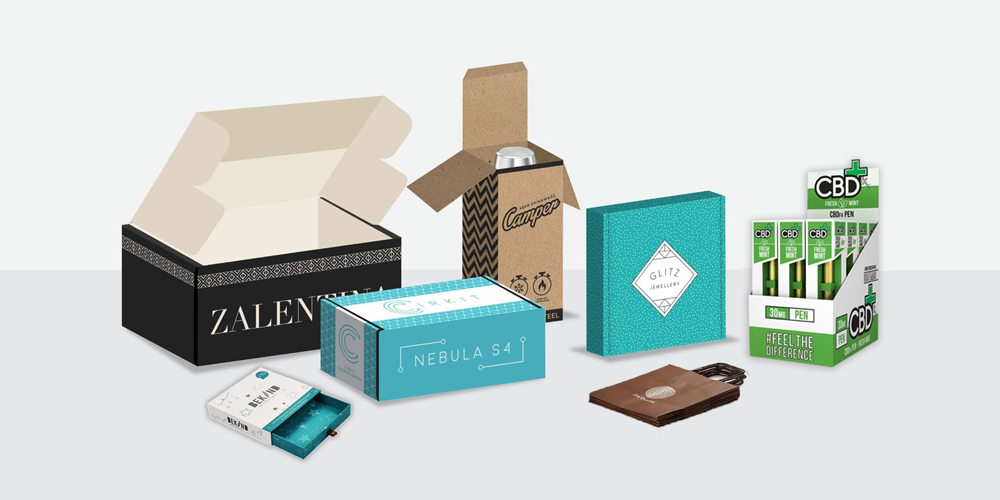In a world where consumer preferences and environmental concerns are evolving rapidly, the packaging industry is experiencing a significant transformation. As technology advances and sustainability becomes a key focus, the future of packaging is set to witness groundbreaking changes. This article explores the latest trends and predictions shaping the packaging landscape, from intelligent solutions to eco-friendly materials.
Innovative Packaging: Enhancing User Experience
In the era of IoT, innovative packaging has become a game-changer for businesses and consumers alike. By integrating sensors and connected technologies, products can now interact with consumers in ways never seen before.
Leveraging Internet of Things (IoT) Technology
IoT-enabled packaging allows products to communicate with smartphones and other devices, providing consumers with valuable information about the product’s usage, expiration dates, and storage conditions. For example, intelligent labels on food items can indicate freshness levels, ensuring optimal consumption.
Interactive Packaging Designs
Packaging is no longer just a protective covering; it has become an interactive medium. Brands increasingly incorporate augmented reality (AR) features, enabling customers to access additional content, play games, or try virtual product demonstrations. This interactive element enhances user engagement and brand loyalty.
Real-time Monitoring and Product Safety
Innovative packaging enables real-time monitoring of products during transportation and storage. Temperature-sensitive goods, pharmaceuticals, and perishable items can be tracked to ensure they remain within the specified conditions, ensuring product safety and quality.
Sustainable Materials: The Rise of Eco-Friendly Packaging
As environmental concerns intensify, the packaging industry actively seeks sustainable alternatives to traditional materials.
Biodegradable and Compostable Materials
Biodegradable materials, such as plant-based plastics and biopolymers, break down naturally over time, reducing the impact of packaging waste on the environment. Compostable packaging goes a step further, providing nutrients to the soil when disposed of in composting facilities.
Recycled Packaging Solutions
Recycled packaging involves using post-consumer or post-industrial waste to create new packaging materials. This approach reduces the demand for virgin materials and minimizes waste, contributing to a more circular economy.
Innovative Alternatives to Single-Use Plastics
The global movement against single-use plastics has led to the emergence of innovative alternatives. Packaging made from materials like seaweed, mushroom mycelium, and even edible films is gaining traction as a viable replacement for traditional single-use plastics.
Minimalist Packaging: Embracing Simplicity and Functionality
In a world overwhelmed by consumer products, minimalist packaging focuses on simplicity and functionality.
Importance of Minimalist Packaging
Minimalist packaging reduces unnecessary clutter and wastefulness, promoting a cleaner and more visually appealing product presentation. It aligns with the principles of sustainability and eco-consciousness.
Streamlined Design for Reduced Waste
Minimalist packaging emphasizes essential product information, eliminating excessive wrapping and excess materials. Reducing the amount of packaging helps decrease waste generation and conserves resources.
Storytelling through Minimalist Packaging
In minimalist packaging, every design element plays a role in storytelling. Brands use clever graphics and colors to evoke emotions and create a memorable brand experience for consumers.
Personalization: Tailoring Packaging for Individual Customers
With the abundance of data available, brands are leveraging personalization to create unique customer packaging experiences.
Utilizing Data and Analytics
Data-driven insights enable brands to understand their customers better. By analyzing purchase behavior and preferences, brands can tailor packaging designs to resonate with specific target audiences.
Customized Packaging for Enhanced Brand Connection
Personalized packaging makes customers feel special and appreciated. Brands can print individual names, messages, or images on the packaging, fostering a stronger emotional connection with consumers.
Print-on-Demand Packaging Solutions
Print-on-demand technology allows brands to produce packaging materials in real-time, reducing inventory costs and minimizing waste. This technology enables on-demand customization and efficient supply chain management.
Augmented Reality (AR) Integration: Immersive Packaging Experiences
AR technology is revolutionizing the way customers interact with packaging and products.
Engaging Customers with AR Features
AR integration on packaging creates interactive and immersive experiences. Customers can visualize products in their environment, try virtual makeup, or virtually “try on” clothes before making a purchase decision.
Virtual Try-Ons and Product Visualization
In industries like fashion and beauty, AR enables virtual try-ons and makeup simulations. Customers can explore different product variants and make informed choices based on their preferences.
Bridging Online and Offline Shopping Experiences
AR-enhanced packaging bridges the gap between physical stores and e-commerce platforms. Customers can engage with products virtually, replicating the tactile experience of in-store shopping.
Intelligent Labels: Transforming Consumer Interaction
Smart labels surpass traditional barcodes by enabling direct communication between products and consumers.
NFC and RFID Technology in Packaging
Near Field Communication (NFC) and Radio-Frequency Identification (RFID) technologies are commonly used in smart labels. Consumers can tap their smartphones on products to access detailed product information and promotions.
Benefits of Smart Labels for Consumers and Brands
Smart labels provide convenience and transparency to consumers, allowing them to make informed choices. Brands gain valuable data on customer behavior and preferences.
Improved Traceability and Supply Chain Management
Smart labels offer end-to-end traceability of products, which is crucial in industries such as pharmaceuticals and luxury goods, where authenticity and safety are paramount.
Packaging Automation: Boosting Efficiency and Sustainability
Automation is driving significant advancements in the packaging industry, leading to increased efficiency and reduced environmental impact.
Robotic Packaging Systems
Robotic systems automate repetitive packaging tasks, such as filling, sealing, and labeling. This speeds up production, reduces the risk of errors, and improves consistency.
Energy-Efficient Manufacturing Processes
Automated packaging machines are designed to optimize energy consumption, lowering the overall carbon footprint of packaging operations.
Reducing Carbon Footprint with Automation
By streamlining packaging processes and minimizing material waste, automation plays a vital role in reducing the environmental impact of the packaging industry.
Bioplastics: Advancements in Sustainable Packaging
Bioplastics offer a promising alternative to conventional plastics derived from renewable resources.
The Growing Popularity of Bioplastics
As consumers demand eco-friendly options, the popularity of bioplastics has soared. Companies are increasingly turning to bioplastics as part of their sustainable packaging strategies.
Bioplastics vs. Conventional Plastics
Bioplastics differ from traditional petroleum-based plastics in their production process, sourcing, and environmental impact. They are designed to biodegrade or break down naturally, reducing long-term pollution.
Innovations and Challenges in Bioplastics Development
While bioplastics show immense potential, there are challenges like scalability, cost-effectiveness, and ensuring compatibility with existing recycling infrastructure.
Intelligent Tracking and Authentication: Combating Counterfeiting
Counterfeit products pose a significant threat to brands and consumers. Intelligent tracking and authentication technologies help combat counterfeiting and protect brand integrity.
Anti-Counterfeit Technologies in Packaging
Incorporating unique codes, holograms, or tamper-evident features on packaging helps verify the authenticity of products and prevents counterfeit goods from entering the market.
Ensuring Product Authenticity and Consumer Trust
Innovative tracking solutions build trust with consumers, ensuring they purchase genuine products from trustworthy brands.
Consumer Empowerment through Traceability
Traceable packaging empowers consumers to verify a product’s origin and journey, allowing them to make ethical and informed purchasing decisions.
The Circular Economy: A Paradigm Shift in Packaging
The circular economy model aims to minimize waste and promote the continuous use and recycling of materials.
Embracing a Circular Packaging Model
In the circular economy, packaging is designed for durability, reusability, and recyclability, forming a closed-loop system that reduces waste generation.
Reusable and Refillable Packaging Solutions
Brands are exploring reusable packaging concepts, where customers can return containers for refilling or exchange, reducing the need for single-use packaging.
Extended Producer Responsibility (EPR)
Extended Producer Responsibility holds manufacturers accountable for the entire life cycle of their products, encouraging them to create sustainable packaging solutions and facilitate recycling programs.
Inclusive Design: Accessible Packaging for All
Inclusive packaging design ensures that products are accessible and easy for people of all ages and abilities.
Importance of Inclusive Packaging
The inclusive design considers the diverse needs of consumers, including those with physical limitations or sensory impairments, fostering inclusivity and broadening the target market.
Designing for Diverse User Needs
Design elements such as larger fonts, easy-open features, and tactile indicators benefit elderly individuals and people with disabilities.
Promoting Social Responsibility through Inclusive Design
By adopting inclusive packaging, brands demonstrate their commitment to social responsibility and dedication to providing accessible products.
Innovative Waste Management: Transforming Packaging Disposal
As packaging waste becomes a pressing environmental issue, intelligent waste management solutions offer innovative approaches to tackle the problem.
Smart Bins and Sorting Technologies
Smart waste bins equipped with sensors enable efficient waste sorting and recycling. They help consumers make informed disposal decisions and improve recycling rates.
Encouraging Consumer Recycling Habits
Packaging with recycling instructions and eco-friendly messaging encourages consumers to participate actively in recycling efforts.
Collaborative Efforts for Effective Waste Management
Partnerships between packaging manufacturers, waste management companies, and governments are crucial in developing adequate waste management infrastructures.
Blockchain in Packaging: Enhancing Transparency
Blockchain technology is revolutionizing transparency and traceability throughout the packaging supply chain.
Utilizing Blockchain for Supply Chain Transparency
Blockchain creates an immutable record of a product’s journey from production to consumption, ensuring transparency and authenticity.
Preventing Counterfeiting with Blockchain Technology
The decentralized nature of blockchain prevents unauthorized alterations and helps brands protect their intellectual property and consumers from counterfeit products.
Building Consumer Confidence with Verified Data
By providing access to verified and real-time data, blockchain enhances consumer confidence in the products they purchase.
E-commerce Packaging Trends: Catering to Online Shopping
As e-commerce continues to surge, the packaging is vital in delivering a memorable unboxing experience.
Sustainable Packaging for E-commerce
E-commerce companies are adopting eco-friendly packaging solutions to reduce the environmental impact of shipping-related waste.
Unboxing Experience and Brand Loyalty
Carefully curated unboxing experiences create positive associations with the brand, fostering customer loyalty and encouraging social media sharing.
Optimizing Packaging for Shipping Efficiency
Efficient packaging design reduces shipping costs and minimizes the carbon footprint associated with e-commerce deliveries.
Bio-Inspired Packaging Solutions: Nature as a Blueprint
Inspired by the efficiency and sustainability of natural ecosystems, bio-inspired packaging offers innovative solutions for a greener future.
Biomimicry in Packaging Design
Biomimicry draws inspiration from nature’s ingenious designs, incorporating self-healing materials and lightweight structures into packaging solutions.
Harnessing Nature’s Efficiency
Nature’s design principles optimize material usage and energy efficiency, guiding the development of sustainable packaging practices.
Innovations Inspired by Flora and Fauna
Packaging innovations inspired by plants, animals, and natural processes are revolutionizing the industry, reducing waste and promoting circularity.
Conclusion
The future of packaging is a harmonious blend of innovation, sustainability, and consumer-centric experiences. Innovative packaging solutions, sustainable materials, and inclusive design will shape the industry’s direction, while technologies like AR, blockchain, and automation will redefine consumer interaction with products. As businesses embrace the principles of the circular economy and prioritize eco-friendly materials, the packaging landscape will become more environmentally friendly and socially responsible. By staying ahead of these trends, brands can positively impact both consumers and the planet.
FAQs
- What is innovative packaging, and how does it enhance the user experience?
Innovative packaging uses IoT technology to communicate with consumers, providing real-time information and interactive features, thus improving user experience.
- How can sustainable materials revolutionize the packaging industry?
Sustainable materials, like biodegradable and compostable options, reduce the environmental impact of packaging waste, promoting a greener future.
- What are the benefits of minimalist packaging?
Minimalist packaging reduces waste, enhances brand aesthetics, and fosters a deeper emotional connection with consumers.
- How does AR integration transform packaging experiences?
AR integration creates interactive and immersive packaging experiences, bridging the physical and online shopping gap.
- What role does blockchain play in enhancing transparency in packaging?
Blockchain technology provides an immutable record of a product’s journey, ensuring transparency and preventing counterfeiting.




